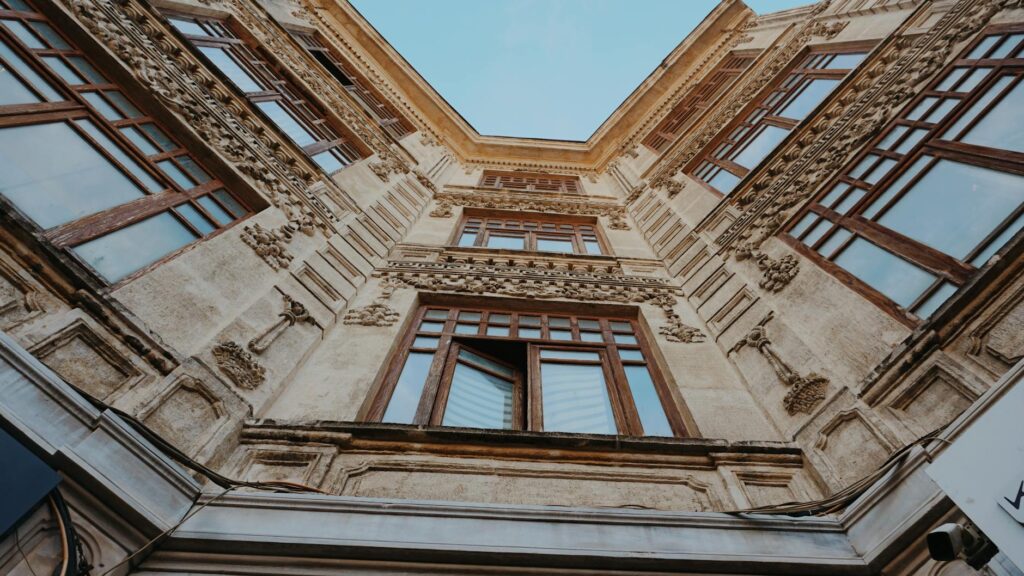The Baroque period, spanning roughly from the late 16th to mid-18th century, left an indelible mark on architecture across Europe and beyond. Characterized by extravagance, drama, and emotional intensity, Baroque buildings are instantly recognizable for their ornate details, grandeur, and awe-inspiring scale. This blog post will delve into the key features and defining characteristics of this captivating architectural style.
Ornate Detail and Decoration
Baroque architecture is defined by its lavish ornamentation. Think intricate carvings, gilded accents, elaborate sculptures, and the extensive use of columns, pilasters, and other classical elements, but employed in a much more dynamic and exuberant way than in previous periods.  The overall effect is one of overwhelming richness and visual excitement.
The overall effect is one of overwhelming richness and visual excitement.
Dramatic Use of Light and Shadow
Baroque architects masterfully used light and shadow to create a sense of dynamism and theatricality. They often employed techniques like curved facades and strategically placed windows to manipulate the interplay of light and shadow, enhancing the drama and emotional impact of their designs. This technique was particularly effective in churches, creating a spiritual atmosphere. [IMAGE_2_HERE]
Grandiose Scale and Imposing Presence
Baroque buildings are often characterized by their immense scale and imposing presence. They were designed to inspire awe and wonder, reflecting the power and authority of the patrons who commissioned them. Think of the vastness of St. Peter’s Basilica in Rome – a perfect example of Baroque grandeur. Learn more about St. Peter’s Basilica.
Curved Lines and Dynamic Forms
Unlike the straight lines and geometric shapes preferred in earlier architectural styles, Baroque architecture frequently incorporates curves, spirals, and other dynamic forms. These flowing lines create a sense of movement and energy, further enhancing the overall drama and theatricality of the designs. [IMAGE_3_HERE]
Use of Sculpture and Painting
Baroque architecture is not just about the building itself; it’s a holistic artistic experience. Sculptures and paintings were seamlessly integrated into the design, often depicting religious scenes or celebrating the achievements of the patron. This fusion of architectural and artistic mediums was a defining characteristic of the Baroque style. Explore famous Baroque sculptures.
Intricate Facades and Ornamentation
The facades of Baroque buildings are often incredibly intricate and highly ornamented. They are designed to be visually arresting and captivating, drawing the eye in with their wealth of detail. The use of multiple levels, broken pediments, and other decorative elements contributes to the overall sense of complexity and grandeur. [IMAGE_4_HERE]
Influence of Classical Architecture
While markedly different from earlier styles, Baroque architecture drew heavily upon classical traditions. However, Baroque architects adapted and reinterpreted classical elements, using them in new and innovative ways to create a uniquely expressive style. This blending of classical elements with Baroque dynamism created a truly distinctive aesthetic. Read more about classical influences in Baroque architecture.
A Legacy of Opulence and Grandeur
The Baroque period left behind a legacy of magnificent buildings that continue to inspire awe and wonder today. The dramatic interplay of light and shadow, the opulent details, and the imposing scale of Baroque structures all contribute to their enduring appeal. From grand palaces to ornate churches, the Baroque architectural style remains a testament to human creativity and ambition.
Frequently Asked Questions
What are the key characteristics of Baroque architecture? Opulent ornamentation, dramatic use of light and shadow, grandiose scale, curved lines, and the integration of sculpture and painting are all key features.
How did the Baroque style differ from previous architectural styles? Unlike the restrained elegance of the Renaissance, Baroque architecture embraced dynamism, extravagance, and emotional intensity.
Where can I see examples of Baroque architecture? Many fine examples of Baroque architecture can be found across Europe, including Rome, Versailles, and Vienna.
What were the main patrons of Baroque architecture? Often, the Catholic Church, royalty, and the aristocracy commissioned Baroque buildings to demonstrate their power and wealth.
How did the Baroque style influence later architectural movements? The Baroque style’s emphasis on drama and ornamentation influenced subsequent styles like Rococo and even some aspects of modern architecture.

